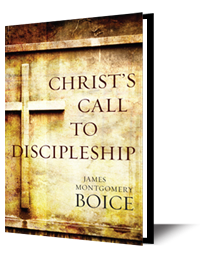The Four Horsemen of the Apocalypse -- Part Four
 The Four Horsemen of the Apocalypse
The Four Horsemen of the Apocalypse
Revelation 6:1-8
Theme: The Lord of history.
This week’s lessons teach us that God is sovereign over even the most terrible of tragedies.
Lesson
Let me back up a moment. I describe the second horse, the red one, as symbolizing bloodshed. Almost all of the commentators agree with that in general terms, but Hendricksen narrows it down a bit. He believes that it’s bloodshed, but that it refers specifically to the persecution of Christians rather than to war and its results in general. This fits the pattern he sees in these chapters, namely, the advance of the gospel resulting in the persecution of believers, judgment on the wicked, and the vindication of God’s people.
He gives a number of reasons. He thinks it’s in accord with the context. He also thinks it’s confirmed by the passage in Matthew 10:34. He points out that "slaughter" is not the normal word for killing, but rather for the killing of believers. Hendricksen applies that to the next seal which is opened, the fifth seal, because then John sees the souls of those who have been slaughtered for the Word of God. It does seem significant that when the fifth seal is opened, what we see are those who have been killed for their testimony.
And yet I have to say, when I read verse 4, it doesn’t seem to be speaking about persecutions. It says that the rider on the red horse was given power to take peace from the earth and to make men slay each other. That’s describing indiscriminate worldwide slaughter, not just the persecution of believers.
When John was writing, the people of his day were well aware of the slaughter that accompanies war. In the thirty years before the reign of Herod the Great, in Palestine alone no fewer than a hundred thousand men perished in one abortive revolution or another. The civil wars that were launched by the assassination of Julius Caesar had been settled by the triumph of Octavius Augustus, but thousands had lost their lives. There had been untold suffering.
Now we turn to the black horse, which symbolizes poverty. Hendricksen says it’s a poverty that would have overtaken many Christians who refused to worship Caesar because they would have been shut out of the guilds that require that kind of allegiance, but if the red horse doesn’t refer to persecutions of Christians specifically, there’s no reason to restrict the poverty symbolized by the rider on the black horse to Christians either. Therefore, this horse would just represent the normal deprivations that accompany war when the regular avenues of supply are interrupted and the fruit of that year’s harvest is destroyed.
The language used here is interesting. A quart of wheat was enough for one person for one day. A denarius was a working man’s wages for a day. Verse 6 actually says a quart of wheat can be bought for a denarius. Normally a denarius would have bought eight to sixteen quarts of wheat or barley, but in the times that are described here it took a whole day’s wages to buy enough merely to keep one person alive if he were buying wheat. He could buy cheaper grain - barley - which might suffice for his family, but he wouldn’t have enough for anything else. This is bare subsistence living.
Moreover, side by side with this in verse 6, there is a reference to oil and wine. "Do not damage the oil and the wine." It indicates the protection of the luxuries of the rich side by side with the scarcity of the poor. There is an example of it from the very time in which John may have been writing. Many people think he wrote during the reign of Domitian, at which time there was a serious shortage of grain throughout the empire, but there had been an abundance of wine. So Domitian did what politicians often do: he ordered a change decreeing that no more vineyards should be planted and that half the vineyards in the provinces should be cut down. This caused riots in Asia Minor because the wine was a large source of their income. In other words he solved one problem by creating another, which often happens by government. He did, however, respond to that reaction. He backed up, changed his law, and issued a contrary edict to the effect that those who allowed their vineyards to go out of production should be prosecuted. And the result was an exact picture of what John seems to be describing in Revelation - a case in which grain was scarce and in which it was forbidden to interfere with the supply of wine and oil.
Study Questions
- To whom does Hendrickson limit the bloodshed and poverty brought by the red and black horses? Why?
- For what reasons does Dr. Boice hold to a broader view of those who suffer?
- To what specific historical event might the mention of the shortage of wheat and barley refer?


















